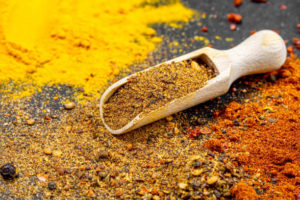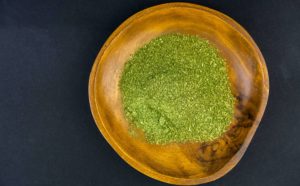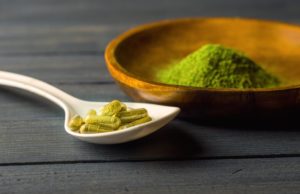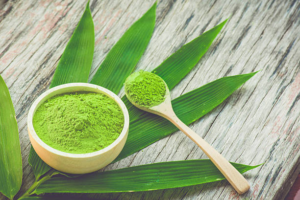
Yellow Maeng Da Kratom: An In-Depth Look at Its Benefits And Strains
Among different kratom strains, one of the popular strains is Yellow Maeng Da Kratom. This strain is known for its versatility and potential benefits. Yellow
Important Notice: Due to Hurricane Milton, customers may experience delays with deliveries to southwest Florida. Please allow us your consideration in the next few days. Thank you for your understanding!

Table of Contents
ToggleKratom is a plant, which is native to Southeast Asia and has garnered much interest for its potential therapeutic effects. The leaves of this plant contain active alkaloids that interact with the body’s receptors, offering different physiological responses. However, like any organic substance, kratom may also degrade over time.
In this article, we will explore the concept of kratom expiry, delving into the factors that influence its shelf life, the signs of deterioration to watch for, and the best practices to store kratom properly to ensure that you always have fresh kratom. Knowing how does kratom expire is essential for maximizing its benefits and ensuring safe consumption.
Kratom’s shelf life can be influenced by storage conditions and the quality of the product. When stored properly in a cool, dry place, away from sunlight and moisture, kratom can maintain its potency and get long shelf life. However, the shelf life varies among different forms such as dried leaves, kratom powder, kratom capsules, or extracts.
High-quality kratom generally has a longer shelf life compared to lower-quality or contaminated products. To ensure its longevity, users should know how does kratom go bad and be mindful of proper storage practices, as exposure to heat, light, and humidity can reduce its shelf life.
Regularly inspecting for any signs of spoilage is also recommended for safe consumption.
The shelf life of kratom can be influenced by various factors that can impact its potency, freshness, and overall quality. Some of the key factors include:
1) Storage Conditions: Proper storage is crucial for extending the shelf life of kratom. Storing it in a cool, dry place away from direct sunlight and moisture helps prevent oxidation and degradation of the active compounds.
2) Quality of Kratom: The initial quality of the kratom product plays a significant role in determining its shelf life. High-quality kratom sourced from reputable vendors is more likely to have a longer shelf life compared to lower-quality or adulterated products.
3) Form of Kratom: Different forms of kratom, such as dried leaves, powder, capsules, or extracts, may have varying shelf lives. Extracts and powders, for example, might have a shorter shelf life due to their higher surface area and exposure to air.
4) Oxidation: Exposure to air can cause the active alkaloids in kratom to break down, leading to a loss of potency over time. This gives an insight into how does kratom expire and how it can be prevented.
5) Moisture: Kratom can absorb moisture from the air, leading to mold growth and decreasing its quality.
6) Heat and Light: Storing kratom in high temperatures or direct sunlight can accelerate its degradation.
7) Packaging: The type of packaging used can impact the shelf life. Air-tight, opaque containers are preferable for maintaining kratom’s freshness and preventing exposure to air and light.
8) Contamination: If there is exposure to contaminants or impurities during kratom storage, its quality can deteriorate more rapidly. In such cases, it is just a matter of time before the kratom goes bad.
To maximize the shelf life of kratom, it is essential to store it properly in a cool, dry place, away from light and moisture, and purchase from reliable vendors that provide high-quality, uncontaminated products. Regularly inspecting the kratom strain for any signs of spoilage is also advisable to tell if kratom is good to use or not.
When kratom reaches its expiration date, its potency and overall quality begin to decline. The active alkaloids, such as mitragynine and 7-hydroxymitragynine, gradually degrade, reducing effectiveness. Furthermore, expired kratom is more susceptible to contamination and mold growth, especially if it has been exposed to moisture or improper storage conditions.
If people have bought kratom wholesale, it will translate into a loss for them as it has been purchased in large quantities. To avoid such situations and maximize the potential benefits of kratom, it is recommended to avoid using expired kratom and instead acquire a fresh supply from reputable sources.
To extend the shelf life of kratom and ensure that kratom won’t go bad, consider following these best practices for proper storage:
1) Store in a Cool, Dry Place: Keep kratom in an airtight container away from direct sunlight, heat, and moisture. Exposure to these elements can accelerate degradation so storing kratom properly is of utmost importance.
2) Avoid Oxygen Exposure: Limit exposure to air as much as possible. Oxygen can cause oxidation, which can degrade the active compounds in kratom.
3) Choose the Right Container: Use glass or thick plastic airtight containers to prevent air from entering and protect kratom from external contaminants.
4) Use Desiccants: Adding desiccant packs to the storage container can help absorb excess moisture and maintain the proper humidity level in any amount of kratom.
5) Separate Batches: If you have a large quantity of kratom, consider dividing it into smaller batches and storing only what you’ll use in the short term. This way, you won’t repeatedly expose the entire supply to air and light.
6) Avoid Freezing: Freezing kratom is not recommended, as it can introduce condensation and cause moisture-related issues.
7) Regular Inspection: Periodically check your kratom for any signs of spoilage, such as mold or a foul odor. Discard any product showing such signs.
8) Purchase from Reputable Sources: Buy kratom from trusted offline and online vendors known for providing high-quality and fresh products.
In conclusion, knowing how does kratom expire is essential for maintaining its potency and safety. Proper storage in a cool, dry place away from heat, light, and moisture is crucial to prolonging its shelf life. Avoiding exposure to air and using airtight containers can prevent oxidation and maintain the freshness of kratom. Regularly inspecting for signs of spoilage, such as mold or changes in texture, is vital for safe consumption. Always purchase kratom from reputable sources and following these best practices, you can keep your kratom, ensuring its effectiveness and preserving its beneficial properties for an extended period.

Among different kratom strains, one of the popular strains is Yellow Maeng Da Kratom. This strain is known for its versatility and potential benefits. Yellow

When it comes to the world of kratom, Green Maeng Da is one of the most popular and highly sought-after strains. Known for its well-being

Kratom stands out for its unique ability to deliver well-being, making it versatile for various needs. Among the many strains available, Maeng Da Kratom stands

Deep within the lush paradise of Southeast Asia lies a Kratom plant with a vibrant hue—white vein kratom. Among the different Kratom strains available, white

This tree, known as Kratom, holds secrets within its leaves—secrets that have captured people’s curiosity worldwide. Each leaf tells a different story, offering unique effects